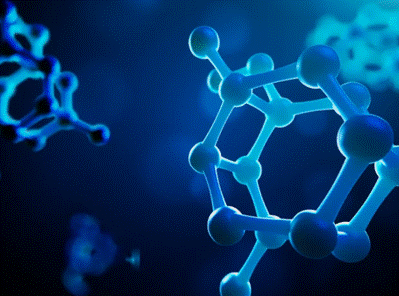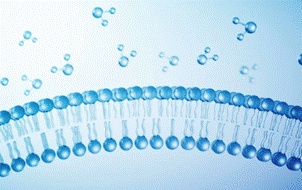Drug efficacy hinges on
several factors, with physicochemical properties holding significant
importance. These properties determine how effectively a drug performs by
influencing crucial processes like absorption, distribution, metabolism, and
excretion (ADME). By understanding these characteristics, pharmaceutical
scientists can make informed decisions in drug design and development stages to
enhance therapeutic outcomes. A deep dive into these parameters—such as
ionization, solubility, lipophilicity, and others—provides insights into their
pivotal roles. Scientific studies reveal that modulating these properties can
optimize bioavailability, enhance drug-receptor interactions and mitigate
adverse effects. The physicochemical elements essentially bridge the gap
between the theoretical design of a drug and its practical effectiveness in
treating a condition. Thus, an in-depth exploration into these properties not
only helps in fine-tuning drug formulations but also streamlines the
development of more effective, efficient, and safe pharmaceutical
interventions, ultimately improving patient outcomes.

Key Physicochemical Properties
Influencing Drug Efficacy
Ionization and pKa: Impact on Drug
Absorption
Ionization plays a crucial role in
drug absorption. The extent to which a drug ionizes directly influences its
solubility and permeability across cellular membranes. Drugs exist as ionized
or unionized forms depending upon the pH of the environment and their own pKa
values. The pKa of a drug is the pH at which half of the drug molecules are
ionized. This understanding guides drug formulation because the non-ionized
form typically crosses cell membranes more easily than the ionized form. For
example, many weak acids are absorbed in the stomach’s acidic environment,
while weak bases often get absorbed in the basic environments of the
intestines. Manipulating pKa and the degree of ionization can thus enhance the
absorption profile of a drug. By designing compounds with suitable pKa values,
pharmaceutical scientists improve bioavailability, thereby increasing
therapeutic efficacy. These adjustments are critical in ensuring that an
adequate concentration of the drug reaches systemic circulation, effectively targeting
the intended biological pathways.
Solubility: The Gateway to
Bioavailability
Solubility is a fundamental
determinant of a drug’s bioavailability. It dictates how a drug dissolves,
which in turn influences absorption and effectiveness. For a drug to be
absorbed systematically, it must first dissolve in bodily fluids. Poor solubility
often results in suboptimal absorption, leading to ineffective drug
concentrations at the target site. Scientists aim to enhance solubility during
drug design through techniques such as salt formation, use of co-solvents, or
the development of amorphous forms. These methods improve a drug’s dissolution
rate and bioavailability, leading to better clinical outcomes. The importance
of solubility extends beyond just getting drugs into the system; it ensures
potency and reduces the required dosage, minimizing potential side effects. By
mastering the art of optimizing solubility, drug developers can craft
medications that perform consistently and efficiently across diverse
physiological conditions, ensuring that patients reap the full benefits of
their prescriptions.
Lipophilicity and Partition
Coefficient (Log P)
Lipophilicity refers to a
compound’s affinity for lipids, which is quantified by its partition
coefficient (Log P). This characteristic is crucial as it dictates how well a
drug can penetrate cell membranes composed largely of lipid bilayers. A
balanced lipophilicity is essential for optimal drug absorption and
distribution. Drugs with high lipophilicity might cross the membrane more
readily but also have a propensity to remain in lipid media, potentially
causing toxicity. Conversely, low lipophilic drugs may not penetrate cells
efficiently, reducing effectiveness. By carefully adjusting the Log P during
drug design, scientists can achieve an ideal compromise, enhancing solubility
in bodily fluids without compromising membrane permeability. This balance ensures
adequate passage through biochemical barriers, reaching the site of action
effectively. The optimization of lipophilicity not only facilitates better
cellular uptake but also influences the overall pharmacokinetic profile of the
drug, contributing to enhanced therapeutic efficacy and safety.
Structural and Interaction Factors
in Drug Design
Hydrogen Bonding and Molecular
Interactions
Hydrogen bonding influences
molecular interactions between drugs and their targets. These bonds, while
weaker than covalent bonds, are vital for the specificity and strength of
drug-target interactions. The design of drugs often involves optimizing hydrogen
bond donors and acceptors to enhance target binding affinity. Effective
hydrogen bonding can augment drug potency by stabilizing the drug-receptor
complex. During drug development, attention to these bonds ensures the compound
precisely fits and engages with its target, thereby enhancing efficacy.
Tailoring hydrogen bond interactions allows for improved selectivity, reducing
off-target effects and potential side effects. Moreover, hydrogen bonds also
contribute to a drug’s stability and solubility, indirectly affecting its
bioavailability and pharmacokinetics. By mastering hydrogen bonding
characteristics, pharmaceutical developers can design drugs that not only bind
effectively to their intended targets but also exhibit favorable
physicochemical properties for improved therapeutic profiles.

Protein Binding and Distribution
Protein binding influences how
drugs are distributed within the body. Once administered, drugs may bind
reversibly to plasma proteins like albumin, affecting their availability and
activity. Only unbound drug molecules can cross cell membranes and reach the
site of action. A high degree of protein binding can reduce the amount of free
drug, potentially diminishing effectiveness. However, it can also mean a
prolonged duration of action as the drug is slowly released over time.
Understanding and optimizing protein binding is essential to balancing efficacy
and durability. In drug design, altering chemical structures to modulate
protein affinity is a strategy employed to adjust pharmacokinetic
characteristics. This insight ensures that drugs maintain sufficient active
concentrations for therapeutic action while minimizing toxicity. Through
controlled manipulation of protein binding, pharmaceutical scientists can craft
medications with predictable and sustained effects, enhancing both safety and
effectiveness.
Isomerism and Bioisosterism in Drug
Activity
Isomerism and bioisosterism
represent critical elements in refining drug activity. Isomers are molecules
with the same molecular formula but different structures, leading to different
pharmacological effects. Enantiomers, a type of isomer, can have significantly
varied efficacy and safety profiles. One enantiomer might be therapeutically
active, while its mirror image could be less potent or even harmful. Thus,
choosing the right isomer is crucial in drug design. On the other hand,
bioisosterism involves modifying a drug’s chemical structure by replacing one
part with a different group that exhibits similar physical or chemical
properties. This strategy can enhance biological activity, reduce toxicity, or
improve pharmacokinetic properties without altering the drug’s primary mode of
action. Pharmaceutical scientists employ these techniques to refine therapeutic
profiles, ensuring that drugs interact optimally with their biological targets
while maintaining desired safety and efficacy standards.
Conclusion
In summary, the define physicochemical properties of drugs are foundational to their efficacy. Each
property—from ionization and solubility to lipophilicity and structural
nuances—plays a pivotal role in influencing how a drug interacts with
biological systems. Understanding these characteristics enables pharmaceutical
scientists to design drugs with optimal therapeutic profiles, maximizing
effectiveness while minimizing side effects. The rigorous assessment and
manipulation of these properties during the drug development process not only
enhance drug performance but also streamline regulatory approval pathways,
promising better health outcomes and improved quality of life for patients. As
pharmaceutical technologies advance, the interplay between these
physicochemical attributes will remain a keystone in the quest to develop
innovative, effective, and safe therapeutics tailored to diverse medical needs.



